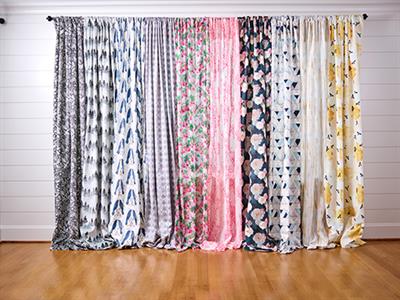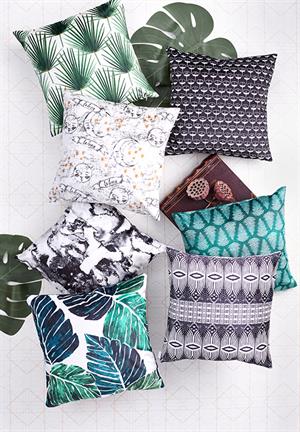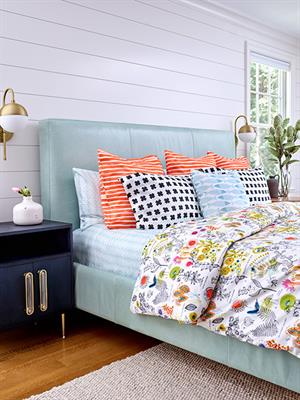 Digitally printed home furnishings are gaining popularity in the market. Today, it’s one of the fastest areas of growth in digital textile printing. Because of this, many digital printers who are currently serving other markets are starting to look at how they can leverage their existing machinery, expertise and supply chains to enter the home furnishing market.
Digitally printed home furnishings are gaining popularity in the market. Today, it’s one of the fastest areas of growth in digital textile printing. Because of this, many digital printers who are currently serving other markets are starting to look at how they can leverage their existing machinery, expertise and supply chains to enter the home furnishing market.
Serving new markets: Digital printing can facilitate faster speed-to-market and a wider array of design options, but to ensure a final product that lives up to its end-use requirements, it’s important to consider a variety of elements.
 Performance matters: Textiles that are used in the home are put to use. Whether they are sat on, exposed to sunlight and water, or slept on, they have to hold up — often for years — to the normal use patterns of people’s lives. There are different performance requirements for fabrics, colorants and consumer vs. commercial goods. Adding to that are critical regulatory requirements.
Performance matters: Textiles that are used in the home are put to use. Whether they are sat on, exposed to sunlight and water, or slept on, they have to hold up — often for years — to the normal use patterns of people’s lives. There are different performance requirements for fabrics, colorants and consumer vs. commercial goods. Adding to that are critical regulatory requirements.
Fabric choice: The performance requirements for fabrics used in home furnishings can be more stringent than some other markets, so starting with the right fabric is key. This also includes finishing considerations such as applying fire retardants, stain and water repellents before printing.
Ink choice: The combination of ink chemistry and fabric is one of the most important things to consider when getting into digitally printed home textiles. Ink affixed to fabric has to meet the physical testing standards of the home textiles market — testing requirements vary based on end product and consumer expectations.
 Testing requirements: There are many requirements that come into play with home textiles testing including durability and washability, which can vary greatly based on the product's end use. For example, any home textile that will be dry cleaned should be tested for colorfastness, dimensional change and overall appearance after, as noted by Diana Wyman of the American Association of Textile Chemists and Colorists (AATCC).
Testing requirements: There are many requirements that come into play with home textiles testing including durability and washability, which can vary greatly based on the product's end use. For example, any home textile that will be dry cleaned should be tested for colorfastness, dimensional change and overall appearance after, as noted by Diana Wyman of the American Association of Textile Chemists and Colorists (AATCC).
When exploring new markets for digitally printed textiles, acquiring an understanding of regulation and chemistry questions to ask can make possibilities, almost, endless.
Read the full article for more insights from Wyman and other industry experts on printing home textiles. Save the date to connect with these experts for an even more in-depth look at the industry landscape at the SGIA/AATCC Digital Textile Printing Conference 4.0 (December 11 - 12; Durham, N.C.).
Five Considerations for Digitally Printed Home Furnishings
Jul 18, 2019